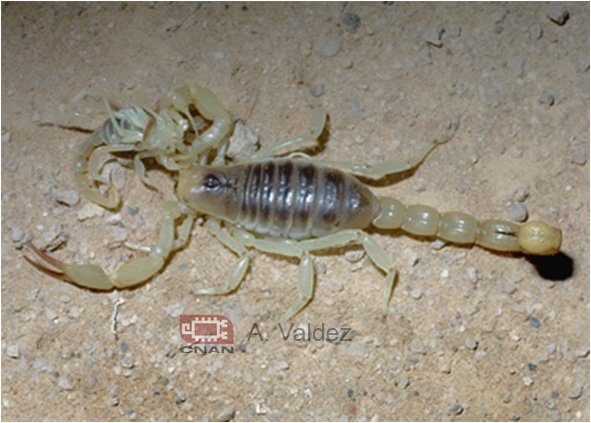
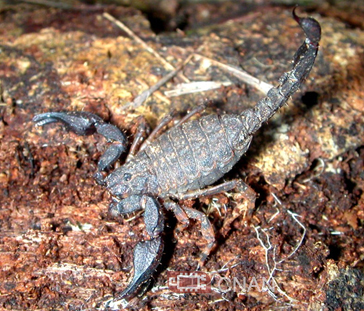
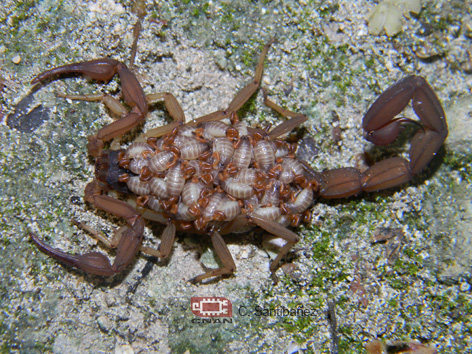
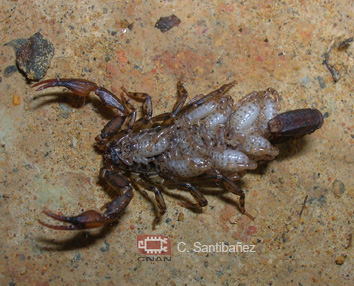
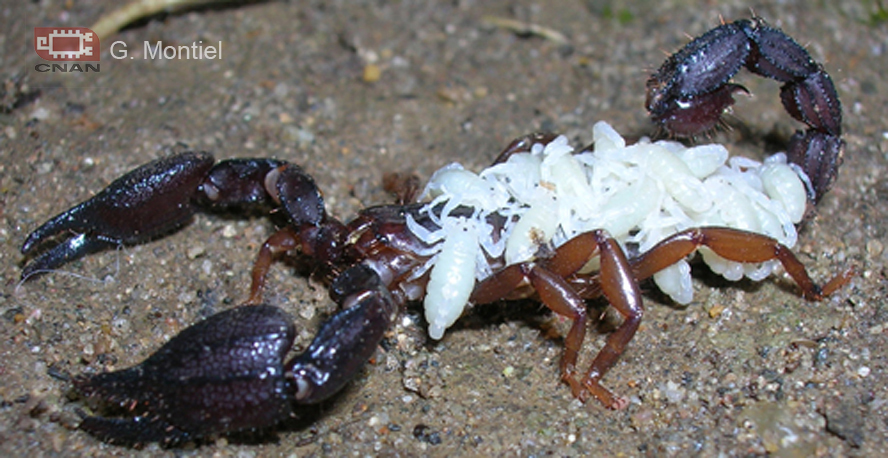
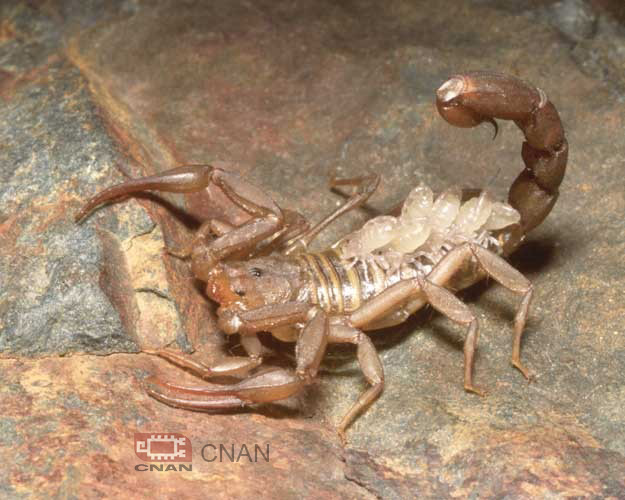
Ecology: Scorpions are nocturnal predators, their ways of hunt depend on the it's habitat, for example, errant scorpions which live under any object on the ground go out and hunt by night, rarely return to the same place they spent the day before. Other species inhabit burrows on the ground made by them. This scorpions use the technique of "wait and catch", they wait at the burrow's entrance for a prey to pass over them, when they feel it they reach it with big claws (mostly). Scorpions diet includes small artrhopods (small beetles, moths, crickets, isopods and even some other scorpions) to small lizards and rodents}
Life history: Scorpions have a very interesting way of life, some species live few years but some others can live up to 20 years. Its reproduction is also impressive; they have an indirect type of it. The courtship begins when the male reaches the female, graving her by the chelae and leading her to a “special kind of dance”. Male with its pectines, as sensorial organs, finds an ideal place to deposit its spermatophore, which afterwards the female will introduce it into her opercular genital (ventral side of the prosoma). The next step is the breaking off. Gestation longs from few months to a little more than a year. Scorpions are viviparous animals (unlike spiders that are oviparous, this means they born from lagging eggs, scorpions development occurs within their mother’s body). Parturition occurs as follows: the mother forms with its pedipalps a kind of basket to pick the newborns and then, they climb into her mother’s back (dorsum) where they can continue with its development. They’ll molt and then they’ll get down leaving the rest of the cuticle in their mother’s back (so the myth of that newborns eat the mom). They are not social arthropods as the insects, so it is rare to see more than two together.
BIOLOGY
Scorpions belong to the order Scorpiones which are differenciated from the other orders of the class Arachnida by the presence of chelate pedipalps, a divided in two sections opisthosoma, a telson with venonm glands and a sting. Ventrally they have sensorial organs called pectines (see the Morphology section)